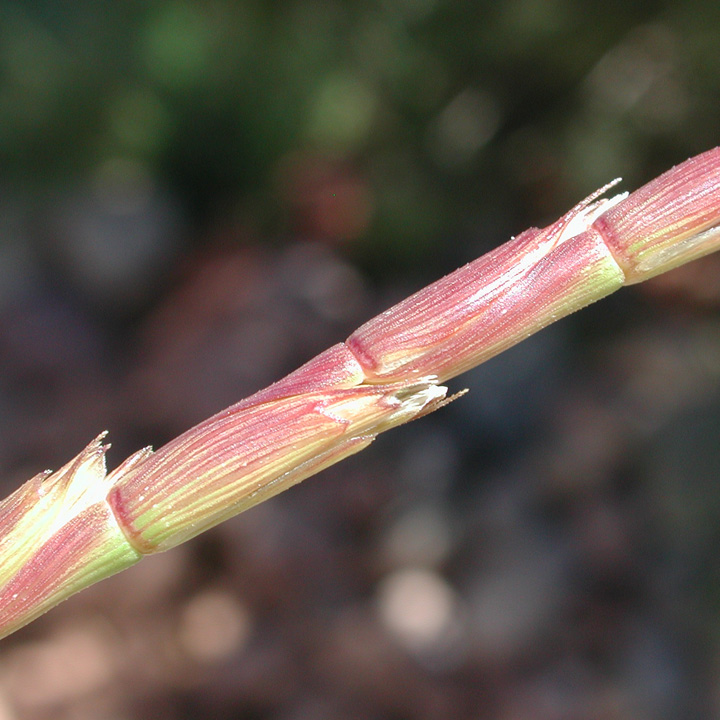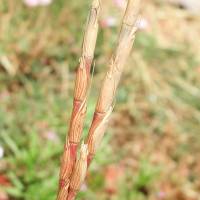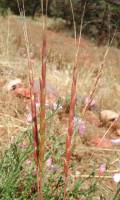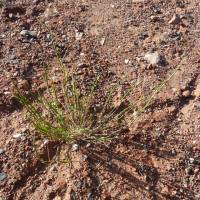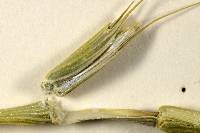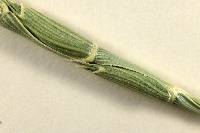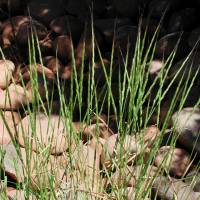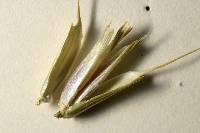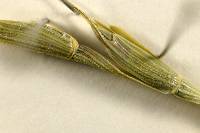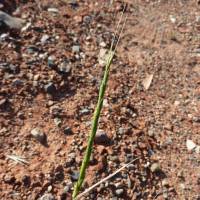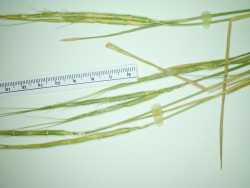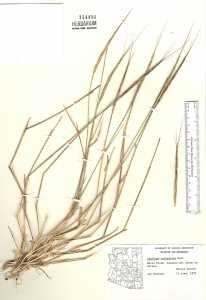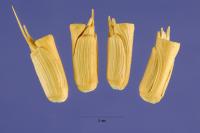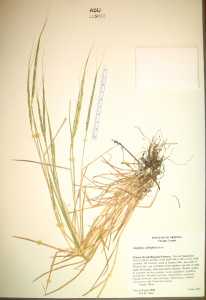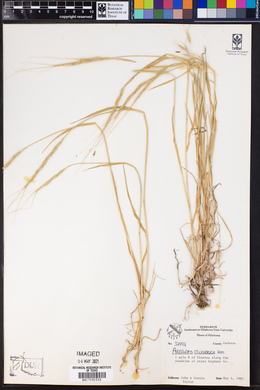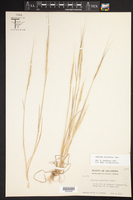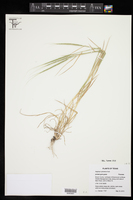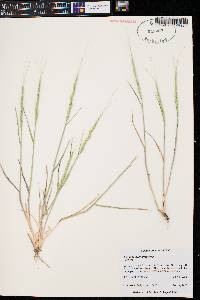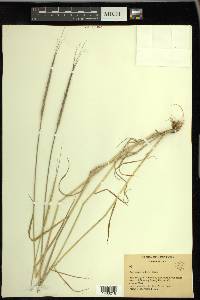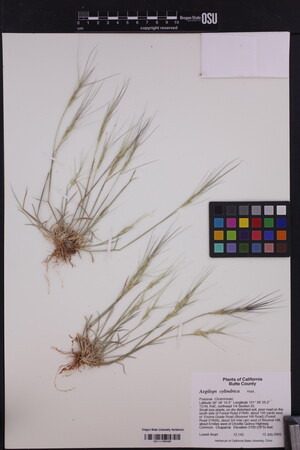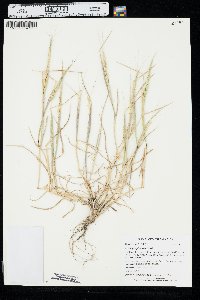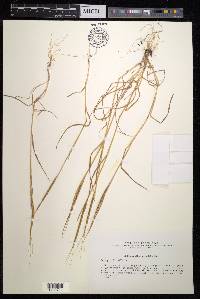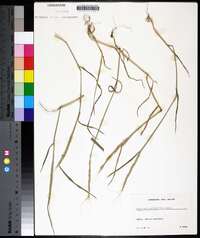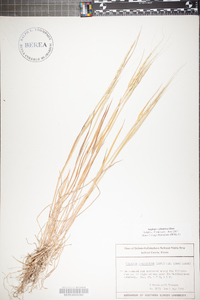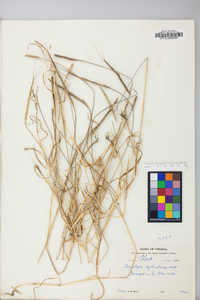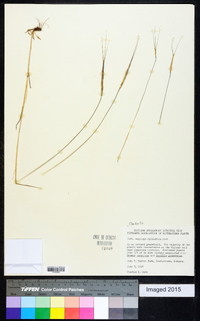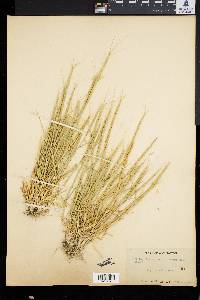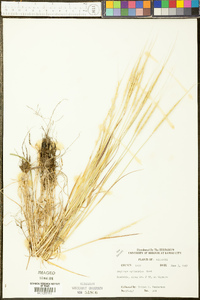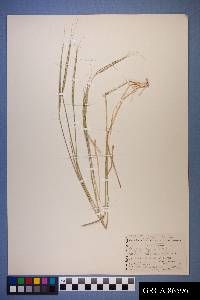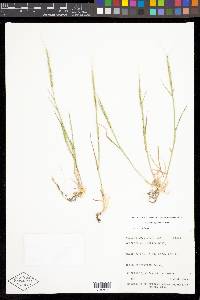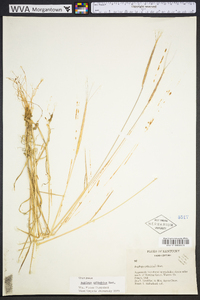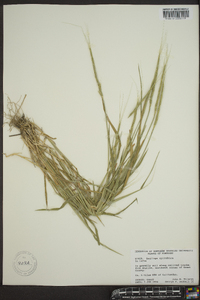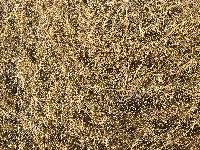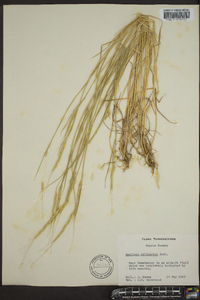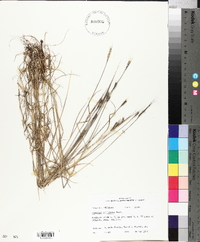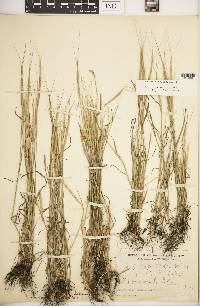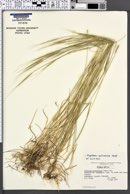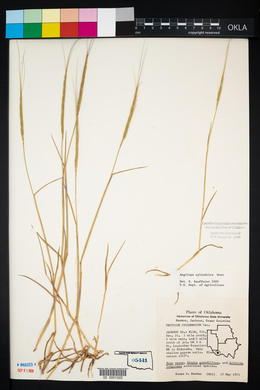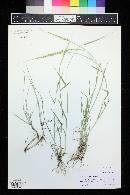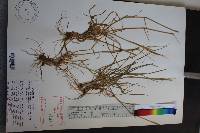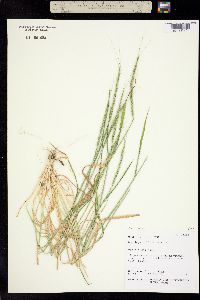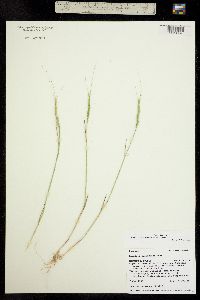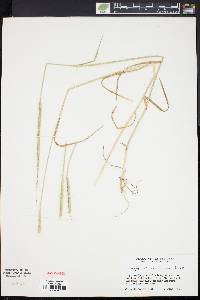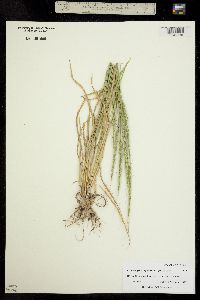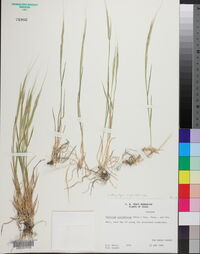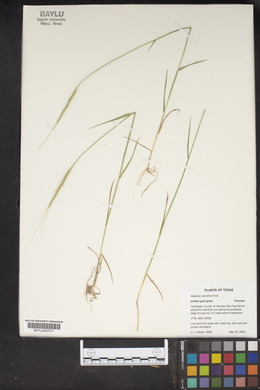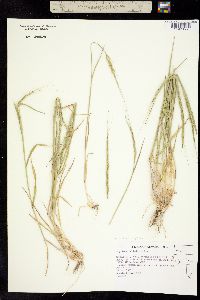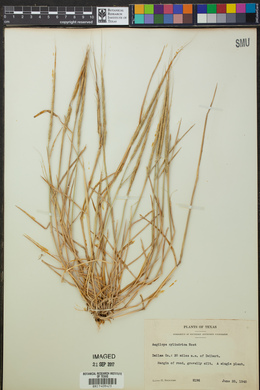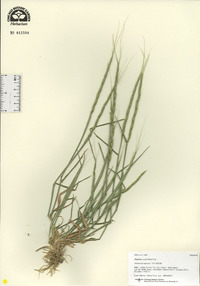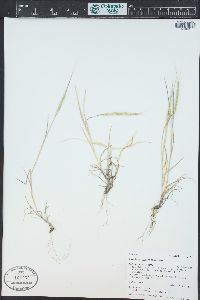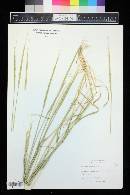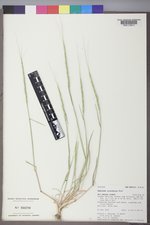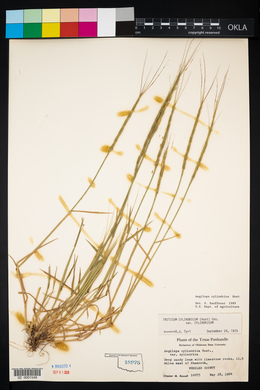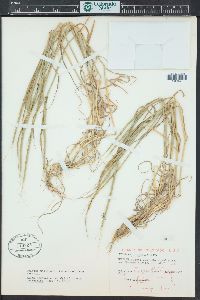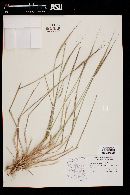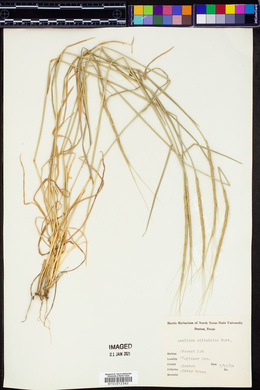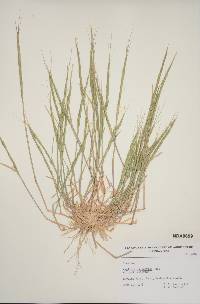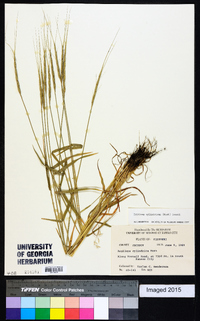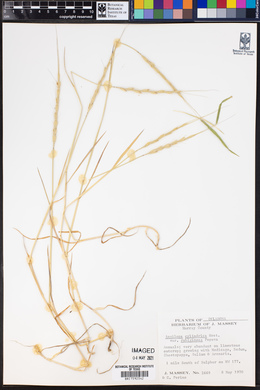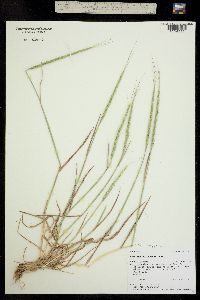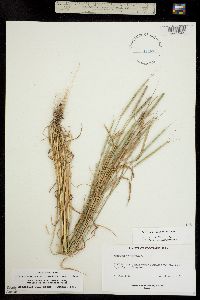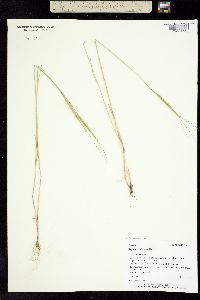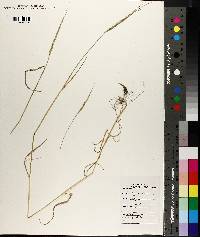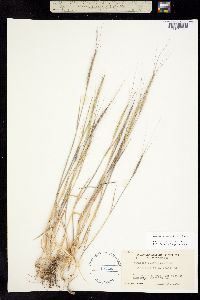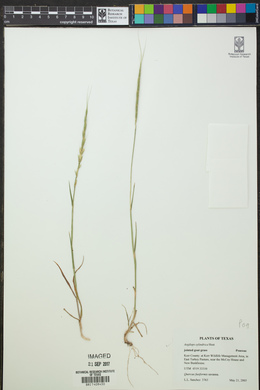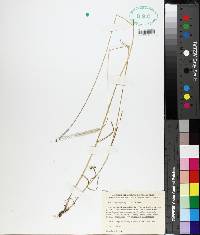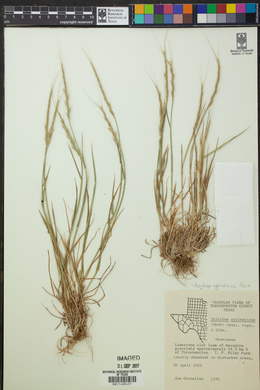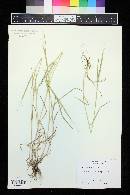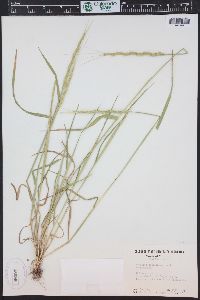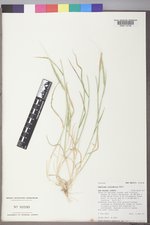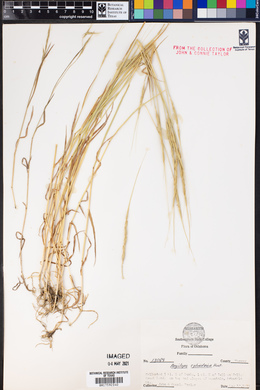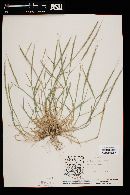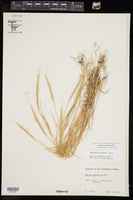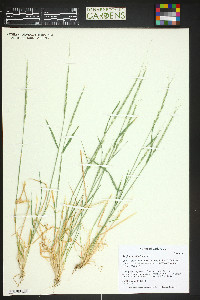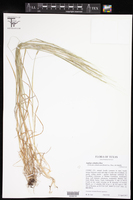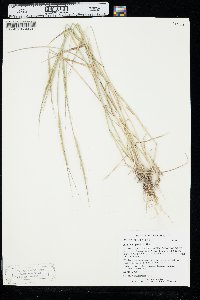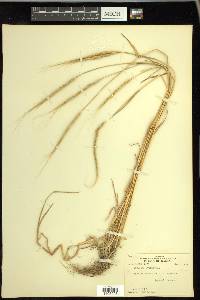
|
|
|
|
Family: Poaceae
Jointed Goat Grass, more...jointed goatgrass, jointgrass, Tausch's goatgrass
[Aegilops caudata subsp. cylindrica (Host) Fiori, moreAegilops cylindrica subsp. aristulata Zhuk., Aegilops cylindrica subsp. pauciaristata (Eig) Chennav., Aegilops cylindrica var. albescens Popova, Aegilops cylindrica var. aristulata (Zhuk.) Tzvelev, Aegilops cylindrica var. brunnea Popova, Aegilops cylindrica var. ferruginea Popova, Aegilops cylindrica var. flavescens Popova, Aegilops cylindrica var. fuliginosa Popova, Aegilops cylindrica var. kastorianum S. S. Karataglis, Aegilops cylindrica var. multiaristata Jansen & Wacht., Aegilops cylindrica var. pauciaristata Eig, Aegilops cylindrica var. prokhanovii Tzvelev, Aegilops cylindrica var. rubiginosa Popova, Aegilops cylindrica var. rumelica Velen., Cylindropyrum cylindricum (Host) A. Löve, Cylindropyrum cylindricum subsp. cylindricum (Host) Á. Löve, Cylindropyrum cylindricum subsp. pauciaristatum (Eig) Á. Löve, Triticum cylindricum (Host) Ces., Pass. & Gib.] |
Sandra M. Saufferer. 2007. Flora of North America vol. 24 Culms 14-50 cm, erect to decumbent at the base, usually with many tillers. Sheaths with hyaline margins, sometimes ciliate; blades 3-15 cm long, 2-5 mm wide. Spikes 2.2-12 cm long, about 0.3 cm wide, narrowly cylindrical, 10-45 times longer than wide, with (2)3-8(12) fertile spikelets; rudimentary spikelets absent or 1-2; disarticulation initially at the base of the spikes and secondarily in the rachises, the spikelets remaining attached to the internodes above. Spikelets 9-12 mm, narrowly cylindrical, scabrous or pubescent, all fertile, with 3-5 florets, lower (1)2-3 florets fertile. Glumes of lower spikelets awned, awns 0.2-0.5 cm; glumes of apical spikelets 7-9 mm, scabrid, apices with a 3-6 cm awn usually flanked by 2 lateral teeth; lemmas of lower spikelets 9-10 mm, adaxial surfaces velutinous distally, apices mucronate or awned, awns 0.1-0.5 cm; lemmas of apical spikelets 1-awned, awns 4-8 cm, flanked by 2 teeth. Caryopses 6-7 mm, adhering to the lemmas and paleas. Haplomes DC. 2n = 28. Aegilops cylindrica is a widespread weed in North America, being particularly troublesome in winter wheat. It usually grows in disturbed sites such as roadsides, fields, and along railroad tracks. It is native to the Mediterranean region and central Asia, and is adventive in other temperate countries. Hybrids with Triticum aestivum have been found in various parts of North America. Being sterile annuals, they do not persist but may significantly reduce the value of the crop. FNA 2007, Utah Flora 1983, Jepson Herbaria-Berkeley, Ann. Checklist GCNP 1987 Common Name: jointed goatgrass Duration: Annual Nativity: Non-Native Lifeform: Graminoid General: Introduced annual weed with open sheaths, flat blades, and a spike-like inflorescence that disarticulates near the base after it matures. Vegetative: Culms 15-50 cm long, erect or decumbent at the lower nodes, often with many tillers, lower sheaths sparsely hairy, upper sheaths glabrous, sheaths with translucent margins, blades flat, often sparsely hairy, 3-14 cm long, 2-5 mm wide. Inflorescence: Spikes 2-12 cm long, 3 mm wide, narrowly cylindrical, disarticulating at the bases, with 3-8 spikelets partly sunken in axis, spikelets 9-12 mm, cylindrical, scabrous or pubescent, glumes of lower spikelets acute with 2-5 mm long awns, glumes of apical spikelets 7-9 mm long, with 3-6 cm long awns, lemmas of apical spikelets with one 4-8 cm long awn, both glumes and lemmas of apical spikelets flanked by 2 teeth. Ecology: Is considered a widespread weed, particularly when it grows in winter wheat crops. Found in disturbed, dry sites such as fallow fields and roadsides. Native to the Mediterranean region and Central Asia. Flowers in June. Distribution: Throughout the United States except in the Southeast and Northeast. Notes: Is closely related to but produces reduced and poorer quality yields than winter wheat. Because it is closely related to winter wheat, it is difficult to control. Hybridizes with Triticum aestivum, forming few functional seeds which can mature into reproductive plants and backcross to either parent. Is distinguished from A. tauschii by having some glumes with awns. Also, spikes are narrowly cylindrical, which helps distinguish it from A. geniculate, A. triuncialis, and A. neglecta, which have spikes that are subcylindrical to ovoid. Ethnobotany: While it is considered a weed, it does have some benefits such as being grazed by cattle in some portions of the Great Plains, and it can be ground and used a feed. Etymology: Aegilops is a greek name referring to a long-awned grass used by Theophrastus for a kind of oat, cylindrica refers to the plant-s cylindrical inflorescence. Synonyms: Aegilops cylindrica var. rubiginosa, Aegilops tauschii, Cylindropyrum cylindricum, Triticum cylindricum Editor: Lkearsley2012 Tufted winter annual, 3-7 dm, decumbent at base; lvs 1-5 mm wide; ligule short; spikes 7-18 cm, 5 mm thick, disarticulating at the nodes when mature; glumes 7-10 mm, asymmetrical, unequally 9-13-veined, mostly bearing one long awn and one short awn or tooth, lemmas 8-11 mm, asymmetrical, 5-veined, those of the upper (usually sterile) spikelets with an awn to 10 cm, those of the lower with progressively shorter awns or none; 2n=28. Native of s. Europe and w. Asia, established and becoming a noxious weed in wheat-fields in w. U.S., e. less commonly along roadsides and in other disturbed habitats to Mich., Ind., and even N.Y. Hybridizes with wheat.(Cylindropyrum c.) A. ovata L., an e. Mediterranean sp. with short, ovoid spikes bearing 2-5 spikelets, the glumes each with 4 long awns, is reported to be established as a weed in Va. Gleason, Henry A. & Cronquist, Arthur J. 1991. Manual of vascular plants of northeastern United States and adjacent Canada. lxxv + 910 pp. ©The New York Botanical Garden. All rights reserved. Used by permission. From Flora of Indiana (1940) by Charles C. Deam Indiana Coefficient of Conservatism: C = null, non-native Wetland Indicator Status: N/A |
|
|
|
This project was made possible in part by the Institute of Museum and Library Services [MG-70-19-0057-19].
Powered by Symbiota

